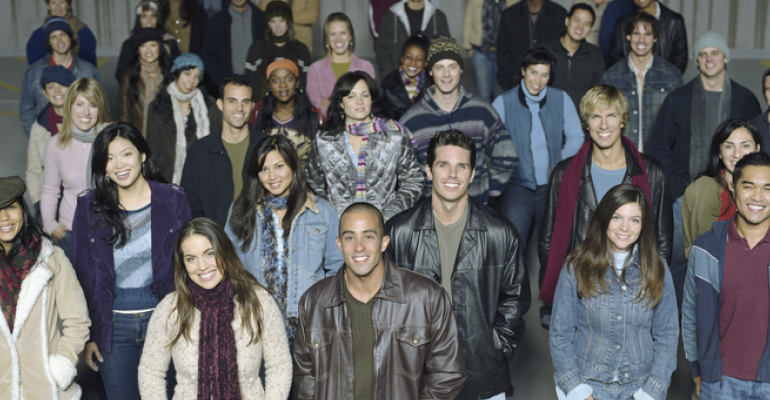Organizations have no choice but to ramp up the trajectory of change and risk-taking at their in-person events, because their attendee base is changing at an alarming pace.
So said Ken Holsinger, senior vice president of strategy for Freeman, during a main-stage presentation at Professional Convention Management Association’s EduCon meeting in Montreal.
Holsinger provided ample proof for his assertion. First, the numbers are clear: The workforce is quickly going from having a strong presence by Boomers (68 million Americans) to being dominated by Millennials (72 million Americans) and Generation Z (69 million members, half of whom will be of working age by 2025).
Second, meetings and conventions are already seeing this shift: With 50.3 percent of those age 55 or older now out of the workforce, the average age of convention attendees dropped from 51 to 45 between 2019 and 2023, with the median age closer to 40.
For associations to maintain relevance in the industries they serve, their live events must be driven by empathetic communication, authenticity, and festivalization, said Holsinger.
Explaining the 3 Drivers
A more specific way of describing empathetic communication: Telling attendees why. Holsinger noted it’s critical that an event’s marketing messages tout the unique benefits of in-person attendance—which are not centered around a robust session lineup. “The younger generations are laser-focused on professional growth that advances their careers, but they are self-reliant,” Holsinger said. “So, if they can learn something on YouTube or another online platform” then it does not belong at an in-person event.
 In fact, younger attendees say they don’t even have time for that type of education at an in-person event. Holsinger presented results from a recent Freeman survey that shows younger attendees’ biggest turn-offs at in-person events—and a too-full session schedule topped the list. (See image)
In fact, younger attendees say they don’t even have time for that type of education at an in-person event. Holsinger presented results from a recent Freeman survey that shows younger attendees’ biggest turn-offs at in-person events—and a too-full session schedule topped the list. (See image)
Instead, event organizers must market the mentoring and perspective-sharing opportunities that can only happen in person, while also highlighting the variety of ways those activities will take place on site. And while “networking” is often promoted as the main benefit to attendees, that is simply a process. For purposes of authenticity, “belonging” and “connection” are the desired outcomes that must be emphasized to potential attendees.
This is also where the idea of festivalization comes in: building out different formats, settings, and environments for interactivity and shared experiences, all with one common mission: promoting belonging and connection between attendees, either all at once or through a series of one-on-one encounters within a given setting.
And with so many Boomers leaving the workplace, those informative stories and perspectives that attendees want must come from a diverse pool of industry members, from relative novices to mid-career grinders to seasoned veterans. Meritocracy is not linked with longevity anymore, Holsinger noted. In other words, the people who deserve to be heard at industry events are not just those who have a lot of years in the business, and younger attendees are especially eager for that diversity of perspective.
Even with awards programs—which rate lowest among younger attendees in terms of appeal at in-person events—presenting the “why” behind the achievements being recognized through storytelling about the winners, and perhaps from the winners themselves, can provide educational value and boost engagement, Holsinger said.
Lastly, to learn what should be on their event agendas in the next few years, Holsinger suggests that associations run regional focus groups comprising industry members who are not members of the association. “Talking to the audience that is not yet coming to your event” is critical to the future success of both the event and the association, he said.





